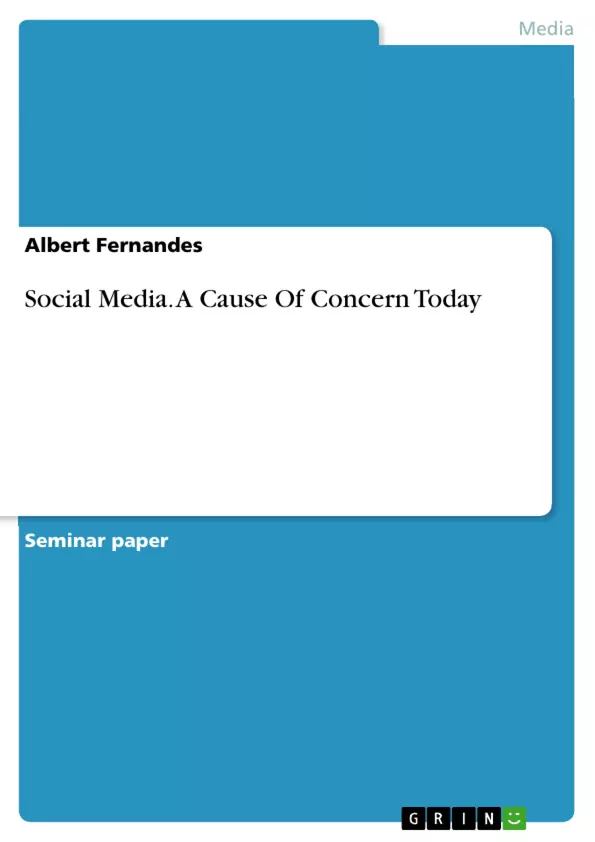Social Media causes us to be. It acts at every moment in our lives. It is there at leisure time, at meals time, at games time, at prayer time, at good and bad times. Social Media has geared our lives 24X7. What can we do without it? Can we do without it? Is it a must? These questions become a center of concern for parents. teachers and elders who are directly or indirectly caretakers of the youth in the families and the society. Why my child behaves this way or that way is a worry of some parents. Why my pupil does not behave the way I guide? is the concern of the teacher. Why the youth do not follow the old ways of the ancestors and parents? is the concern of the elders. ‘I am alright and I do not need your help’ – is the common statement of the children and youth who are totally dependent on social media. They feel confident of what is coming and going across through their internet apps. They think they have all the knowledge they need and feel confident that they have solutions to all their problems. Parents and children have their social media related concerns whereas the parents, teachers and leaders have the worry about their children and pupil.
We shall go deep into the social media and its drawbacks on the lives of their innocent children and youth and see how or whether it causes concern towards their parents, teachers and leaders.
Inhaltsverzeichnis (Table of Contents)
- INTRODUCTION
- SOCIAL MEDIA.
- USE OF INTERNET
- INDIA A UNIQUE CULTURAL SOCIETY.
- MEDIA VALUE SYSTEM AND INDIAN CULTURE.
- CONCERNS CAUSED BY THE SOCIAL MEDIA
- CONSUMERISM.
- BLIND AMBITION.
- CONFORMITY
- CRIMINAL ACTS
- SEXUAL PROMISCUITY.
- VALUELESS VALUES.
- ROLE OF PARENTS, TEACHERS AND LEADERS.
- CONCLUSION.
Zielsetzung und Themenschwerpunkte (Objectives and Key Themes)
This text aims to examine the impact of social media on Indian society, focusing on its potential drawbacks and the concerns it raises for parents, teachers, and leaders. It explores how social media influences the lives of young people and how it interacts with traditional Indian values and cultural practices.
- The influence of social media on Indian youth
- The relationship between social media and traditional Indian values
- Concerns about the effects of social media on consumerism, ambition, and conformity
- The role of parents, teachers, and leaders in addressing these concerns
- The importance of a value-based media education program
Zusammenfassung der Kapitel (Chapter Summaries)
- Introduction: The text begins by highlighting the pervasiveness of social media in modern life and the anxieties it creates for parents, teachers, and elders who are concerned about its impact on young people. It explores the disconnect between the confident and self-assured attitudes of youth who rely on social media and the worries of those who care for them.
- Social Media: This section introduces the concept of social media and explores its features and functions. It emphasizes the interconnectedness of the internet, the creation of online communities, and the sharing of information through various platforms. The author also points out the potential for manipulation and control of shared information by third parties.
- Use of Internet: This chapter discusses the role of the internet in everyday life, highlighting its growing importance in both developed and developing countries. It analyzes the potential benefits of internet access while acknowledging the need for a balanced perspective and caution against its potential drawbacks.
- India a Unique Cultural Society: This chapter explores the unique character of Indian society, emphasizing its “unity in diversity” and the importance of traditional values and wisdom. It discusses the historical context of Indian culture and the impact of globalization and modernization on its evolution.
- Media Value System and Indian Culture: This chapter examines the potential clash between traditional Indian values and the influence of Western media, particularly social media. It discusses the importance of maintaining cultural heritage and the challenges posed by the merging of cultures.
- Concerns caused by the Social Media: This chapter explores the potential negative impacts of social media on Indian youth, focusing on issues like consumerism, blind ambition, conformity, criminal acts, sexual promiscuity, and a decline in traditional values. It highlights the concerns of parents, teachers, and social workers about these issues.
Schlüsselwörter (Keywords)
This text focuses on the impact of social media on Indian society, examining its influence on youth, its interaction with traditional values, and the concerns it raises for parents, teachers, and leaders. Key terms and concepts include social media, Indian culture, traditional values, consumerism, conformity, ambition, sexual promiscuity, value-based media education, and the role of parents, teachers, and leaders in addressing these issues.
- Quote paper
- Albert Fernandes (Author), 2016, Social Media. A Cause Of Concern Today, Munich, GRIN Verlag, https://www.grin.com/document/384242



